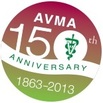|
Getting Your Dog Safely On (and Off) an Airplane
Travel planning can often be quite the ordeal, especially if you are considering taking your dog along for the ride. Take flying with dogs, for example. This may require you to plan for such things as medical records, vaccinations, dog carriers, sedation medication and dog-friendly hotels. Here are some tips to make sure your dog gets on and off the airplane safe and sound. Prior to Takeoff Now just because you want to fly with your dog doesn't mean it's allowed. Each airline has its own pet travel policy and will give careful consideration to your dog's breed, size, health, age and disposition to determine whether he can fly onboard — either as checked baggage in the cargo or accompanied baggage in the cabin. Many carriers have breed and weather restrictions designed for your dog’s own safety, which may force you to reconsider your travel plans. When possible, look for a direct flight and choose a time that will help ensure your dog’s comfort and safety. For example, book an early morning or evening flight during warm summer months, and a mid-day flight during colder months. Purchase an airline-approved crate, which can vary with each airline, and attach your name, flight number(s), cell phone number, emergency contact numbers and final destination to the top of the crate. If it will be a long flight, securely attach a small pack of food, small bottle of water, poop bags and leash to the back of the crate with duct tape in case of delays. Review the policies and requirements of the airline (such as health certificate requirements, pre-flight feeding restrictions, check-in procedures, etc.) as well as the laws of your final destination (proof of current vaccinations from transmittable diseases such as rabies) to make sure you are willing and able to comply with all rules and regulations. Finally, prior to departing for travel, make absolutely sure that your dog has proper I.D. tags attached to his body and if possible a microchip that your veterinarian can easily implant without sedation. The American Veterinary Medical Association (AVMA) recommends you also keep your dog’s medical records up-to-date, and carry a copy with you. And they recommend you check with the airline to see if they require an acclimation certificate (ie., health certificate) for your dog. In the Air If you have prepared all the necessary supplies for your dog's travel, one other thing you may need to consider is sedatives. This will not always be necessary, but you should consult with your veterinarian to see if your dog would benefit from them. Flying for a dog can be extremely stressful at times, and some dogs cannot tolerate traveling without at least light sedation. However, it is also important that you check with the airline, as some airlines will not accept sedated pets. Once You Land Finding dog-friendly hotels and accommodations is much easier than it used to be. In fact, there are lodging options available to suit almost any taste. If your vacation involves camping, note that the National Park Service (NPS) imposes rules that limit dogs from roaming around freely. Consider that dogs and bears are natural antagonists, and suddenly the idea of keeping your dog leashed doesn’t sound so unreasonable! Contact the park destination ahead of time to find out if any additional pet precautions need to be made, and once you arrive, always keep your pet on a leash. Remember, if your plans to travel by air with your dog become too confusing, some companies like Pet Airways or PetAir have travel agents who can help you find a dog-friendly flight.
0 Comments
Leave a Reply. |
The PAW Blog...
For the LOVE of Pets The goal of this blog is to help educate pet owners by sharing pet health facts and pet news articles...and ... sometimes put a smile on your face with a cute or funny pet story! Categories
All
Archives
July 2024
Search for any topic...
|

 RSS Feed
RSS Feed

